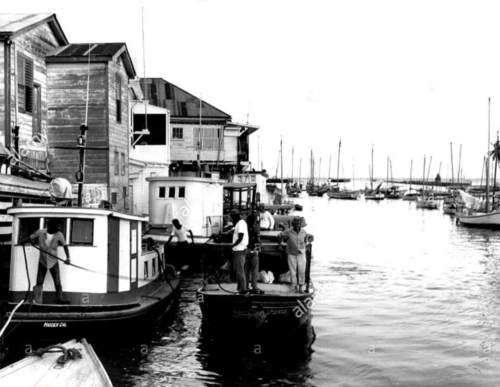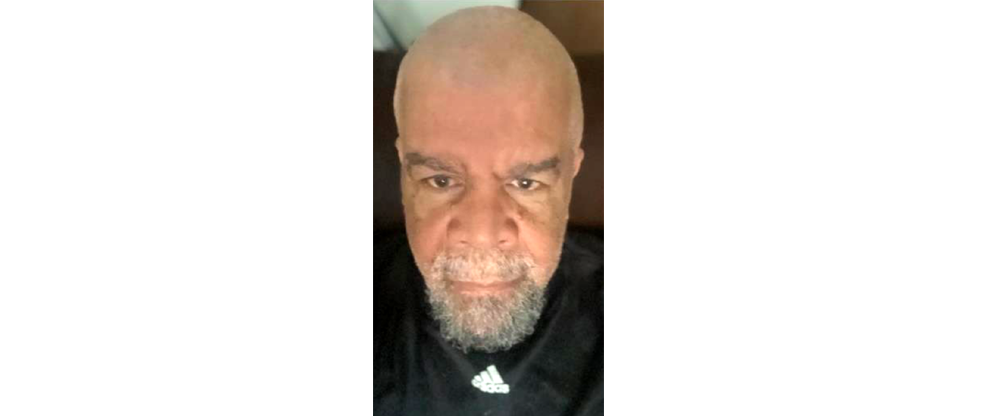Friday, March 28, 2025 at 7:53 PM

This is a photo taken in 1962 of boats at the mouth of the Haulover Creek (Belize River). It shows those tugboats that are rare or non-existent these days. It shows all the fishing boats, sailboats, all those wooden structures at the mouth of the river that have long disappeared. It shows these boatmen, mostly black, performing their duties, mooring and maintaining those tugs. To me, this photograph is an ode to a past that has been mostly forgotten by many of us, and definitely unbeknownst to a younger generation in Belize, not only in the city, but in the country as a whole. I find this photograph haunting and comforting at the same time, maybe because it expresses the stability of those times. When time almost stood still!
This was before self-government, when the British were still in charge of everything—the civil service, police, defence, the judiciary, education, everything. It was a time when we all believed that we were British, not subjects, but British. A time of Bedfords and Land Rovers and Mini Mokes. Mini Mokes were like golf carts on steroids, and were meant to be used by the British army, but suddenly became commercially successful in England, Australia and the Caribbean. Most of our transportation was British; American vehicles were a luxury back then. We had the Austin Cambridge, Vauxhall, and the MGBs.
We also had our own locally made modes of transportation. Our mule-and-cart – well, the mule wasn’t made, but the cart was—and we had our bicycle carts. Both were used to transport goods around the city, a rather economical way for small businesses to cut their costs, and survive against big businesses like Brodies and Romac’s, Santiago Castillo and Ismael Gomez and Guy Nords and Harleys. They used trucks and vans to deliver their goods. The bicycle carts were also mobile markets, selling fruits and vegetables, among other things. If you were in a car behind a mule-and-cart and you were in a hurry, you were in trouble. You had to wait until they found a wide enough part of the roadway to let you pass. Most of the streets were very narrow back then, so patience had to be a virtue; it wasn’t a choice.
What has surprised me most, is that back in the early 20th century there were trains running throughout the country. In Toledo, in Stann Creek and also in the Orange Walk District. They were used to transport bananas and coconuts and sugarcane and even lumber. I was totally unaware of this until later in life, and it made me feel cheated, because here is another piece of history that I was unaware of. It seems that all those railroads disappeared, like so much of history, a long time ago with nary a trace. It makes me wonder why we did not use trains for public transportation? Is it because it wasn’t feasible, or maybe because our terrain did not allow for it? I don’t know the answer, but I’m sure someone does.
The sense of stability that this photograph encapsulates, derives from the fact that it shows that there was order back then. You had Palace and Majestic and Eden theatres in the city, and one in each town. You had Willy Whylie’s and Shamah’s and Roddy’s and Valencia’s for ice cream. You had those popular dance halls; you had 2 parks, one north side and one south side. Entertainment thrived, and everyone knew where they were going; choices were limited, and we survived, and were happy. I’m not claiming that it was good or bad; I’m saying everything was ordered, in place, no stress.
There were no areas of the city that were verboten back then; you could go anywhere you wanted. It was a different time and a different place; and the photo made me go back to the days of my youth, my innocence, to my precious city — 2 hospitals, 1 jail, 1 police station, I radio station, I post office, and a whole lotta Kruffys. Wat a ting!
Now, we are on our own. We are responsible for our own welfare, which is a good thing. We are still captives of colonialism in many ways, but we are in charge. That stability has to be earned these days, not expected. We will make mistakes, which is part of growing up, but we should never forget that we are lucky to have been born here, in the Jewel. We should never forget that we are capable of greatness, never mind the doubters and naysayers. We have to give our kids the opportunity to grow and prosper in a country full of opportunities, a country for the people, not for the oligarchs who always want more. We cannot give in to those who thrive and profit from the anger and violence and desperation of our youths, who see no hope in the future. We have to give them the tools to be better citizens, leaders, and role models. It can happen, if we have the will and the guidance to follow through.
I hope that this photo, as simple as it looks, gives us reason for hope.
Glen

